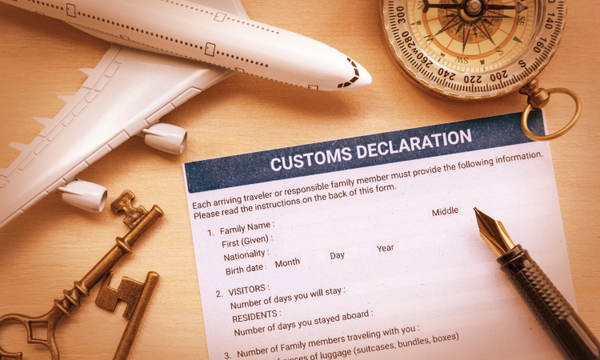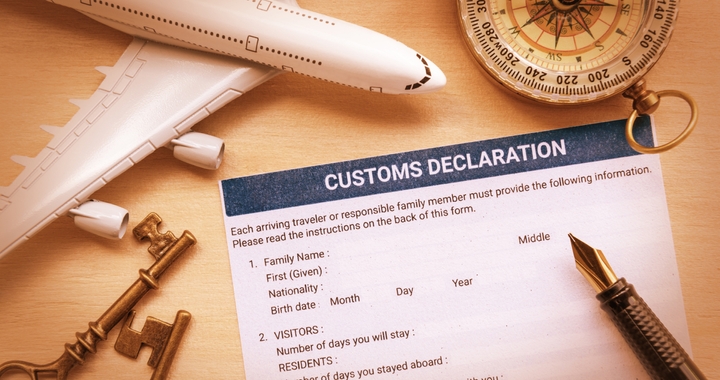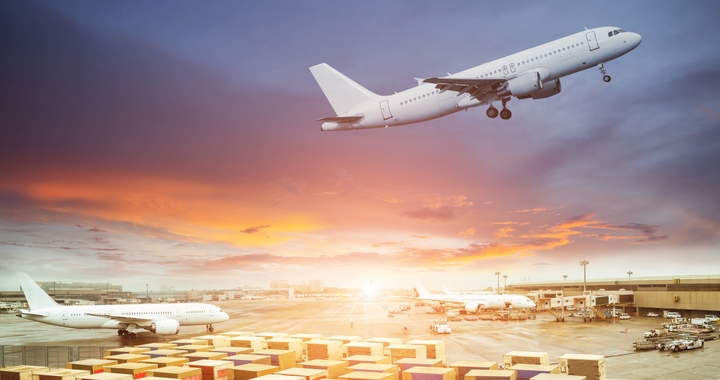Customs Clearance for Air Freight

Customs Clearance for Air Freight
Air freight customs clearance can be complicated and time-consuming. But with the right preparation and documentation, it doesn't have to be. In this article, we let you in on everything you need to know about the customs clearance process for air freight.

What is Customs Clearance?
Customs clearance is the process of submitting documentation to a customs authority to obtain permission to import or export goods. The purpose of customs clearance is to ensure that all applicable duties and taxes are paid and that all regulations regarding importing or exporting goods are followed.
The customs clearance process can vary depending on the country of import or export and the type of goods shipped. In some cases, goods may be able to clear customs without any documentation being required. However, in most cases, documentation such as a commercial invoice, airway bill, and other shipping documents will be required.
It is important to note that customs clearance is different from customs brokerage. Customs brokerage is a service provided by a company that assists with preparing and submitting documentation to customs authorities. In some cases, customs brokers can also assist with the clearance of goods.
What is the Customs Clearance Process?
The customs clearance process is the final step in getting your goods shipped from one country to another. It involves physically inspecting the shipment, verifying that all required documentation is in order, and ensuring that any taxes or duties are paid. In some cases, clearance can also involve completing security checks or other bureaucratic procedures.
The first step in customs clearance is usually to have your shipment inspected by a customs officer. This inspection can be done in person or electronically, and its purpose is to verify that the shipped goods are properly declared and meet all applicable regulations. The inspection may also include a physical examination of the goods to ensure they are safe and compliant with standards.
After the inspection, the customs officer will issue a release order for the shipment. This release order indicates that the shipment has been cleared for entry into the destination country. At this point, you will need to pay any taxes or duties owed on the shipment. Once all of the required payments have been made, the shipment will be released to you, and you can take possession of your goods.
The customs clearance process can seem daunting, but with proper preparation, it can be relatively straightforward.
When is Customs Clearance Required?
In most cases, goods must go through customs clearance before being imported or exported. This process can be done by the importer or exporter or through a customs broker. The main purpose of customs clearance is to ensure that all applicable duties and taxes are paid on the goods traded.
There are some cases where goods may not need to go through customs clearance. For example, if the goods are being sent as a gift to another country or if the value of the goods is below a certain threshold. However, it is always best to check with your local customs authority to ensure that you follow all applicable rules and regulations.
How Much is Customs Clearance?
A few factors will affect the cost of customs clearance, including the type and value of the goods being imported, as well as any applicable duties and taxes. In most cases, businesses can expect to pay around $200-$300 for professional customs clearance services. However, getting quotes from multiple providers is important to ensure you're getting the best possible price.
Who is Responsible for Customs Clearance?
The importer of record is responsible for the clearance of goods through customs. The importer is the party who is legally responsible for ensuring that the goods are correctly declared and that all duties and taxes are paid. In most cases, the importer will be the company or individual ordering the goods from overseas.
If you are using the services of a freight forwarder or customs broker, they may be able to handle the clearance process on your behalf. However, you will still be the importer of record and will be legally responsible for ensuring that the goods are correctly declared and all duties and taxes are paid.
How Long Does Customs Clearance Take?
Generally speaking, most shipments will clear customs within a few days. However, there are cases where shipments can be held up for weeks or even months. If you are importing goods into the US, it is important to know the potential delays that can occur during customs clearance.
There are several factors that can impact how long it takes for your shipment to clear customs. The type of goods you are importing is one of the most important factors. Some goods, such as food and pharmaceuticals, are subject to stricter regulations and may take longer to clear customs.
The port of entry is another important factor. Some ports are busier and may have longer wait times for customs clearance. If you are shipping your goods through a busy port, you may consider using a different port or shipping your goods via a less crowded route.
The time of year can also impact customs clearance times. Shipments tend to back up around major holidays, such as Christmas and Thanksgiving. If you are shipping your goods during these times, you may want to expect delays.
Finally, the country of origin can also impact customs clearance times. Goods shipped from certain countries, such as China and India, may take longer to clear customs due to the increased scrutiny they are subject to.
Air Freight Customs Clearance
As an air freight shipper, you're responsible for ensuring that your goods comply with all applicable customs regulations. This includes providing accurate and up-to-date documentation, declaring the value of your shipment, and paying any duties or taxes that may be owed.
Air freight customs clearance can be complex, but understanding the basics can help make it simpler. Here are the key steps involved in air freight customs clearance:
Pre-shipment Documentation
The first step is to ensure that all required documentation is in order before shipment. This includes commercial invoices, packing lists, and any other required documents.
Air freight customs clearance will require the following documents:
- Proof of identity (passport or other official ID)
- Commercial invoice
- Packing list
- Air waybill
- Insurance documents (if applicable)
- EUR1 Certificate (for preferential rates within the EU)
- ATA Carnet (for temporary import/export of goods)
- Certificate of Origin
- Other relevant export documents (depending on the commodity being shipped)
Classifying the Goods
Once the documentation is in order, the next step is to classify the goods being shipped correctly. This is important for customs purposes and will determine the applicable duties and taxes.
Filing the Entry
The next step is to file a customs entry with the relevant authorities. This will usually be done by the freight forwarder or customs broker.
Payment of Duties and Taxes
Once the entry is filed, the relevant duties and taxes will need to be paid before the goods can be released.
Release of Goods
Once all duties and taxes have been paid, the goods will be released and can be collected from the airport.
Understanding these steps can help make the air freight customs clearance process smoother and simpler. If you have any questions, be sure to consult with a professional customs broker or freight forwarder.
How to Ensure a Smooth Air Shipment Customs Clearance Process

The customs clearance process for air shipments can be a bit more complicated than for other shipments. This is because there are more steps involved and more documentation required. However, if you follow these tips, you can ensure a smooth customs clearance process for your air shipment:
Make Sure All Documentation is in Order
The first step to ensuring a smooth customs clearance process is to ensure that all of your documentation is in order. This includes your commercial invoice, airway bill, and other required documents. If any of these documents are missing or inaccurate, it could delay the clearance process.
Familiarize Yourself with the Customs Regulations
Another vital tip is to familiarize yourself with the customs regulations for the country you are shipping to. This will help you ensure that your shipment complies with all regulations and avoid delays or issues.
Use a Reputable Shipping Company
Using a reputable shipping company is another key to ensuring a smooth customs clearance process. A good shipping company will have experience dealing with customs and can help guide you through the process.
Be Prepared to Pay Any Taxes or Duties
Before shipping your goods, be sure to research any taxes or duties that may be applicable. This way, you can be prepared to pay them when your shipment arrives.
Keep Track of Your Shipment
Once your shipment has been sent, keep track of it. This will help you know when it arrives and ensure that it clears customs in a timely manner.
Following these tips can help ensure a smooth customs clearance process for your air shipment.


